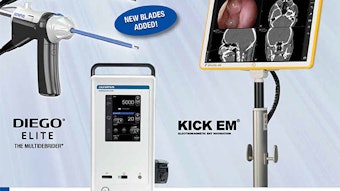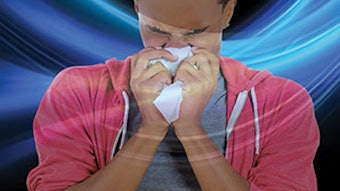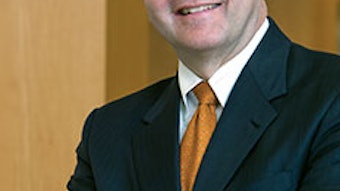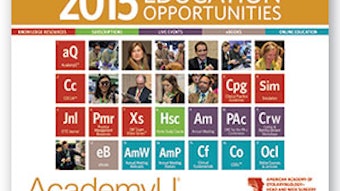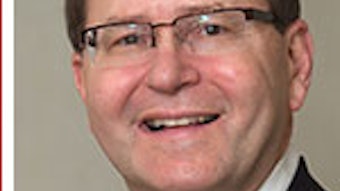Physician, groom thyselfExpanded from the print edition
Attributed to Hippocrates is this description of how a physician should appear: “clean in person, well-dressed, and anointed with sweet-smelling unguents.” The first is a given, the third is outmoded, but the second point proves difficult to pin down: What constitutes appropriate physician attire?
By Mina N. Le, MD
Women in Otolaryngology Section
Attributed to Hippocrates is this description of how a physician should appear: “clean in person, well-dressed, and anointed with sweet-smelling unguents.” The first is a given, the third is outmoded, but the second point proves difficult to pin down: What constitutes appropriate physician attire?
The most distinctive article of physician dress, the white coat, isn’t going away any time soon. Originally adopted for its evocations of cleanliness and of scientific rigor, the white coat is consistently preferred whenever patients are surveyed on how they would like their doctor to dress.1-4 Survey respondents state that a doctor looks “unclean,” “sloppy,” and “unprofessional” without a white coat, “more like a salesman.”2 Despite a “myth” that white coats intimidate, this preference even holds among the pediatric population, with 69 percent of children aged four to eight preferring a doctor in a white coat.5
What footwear is acceptable? Four hundred ninety-six patients surveyed at two Tennessee family practice clinics, using a Likert scale from 1 (desirable) to 5 (undesirable), objected to sandals (3.9 for male physicians, 3.6 for female physicians) as well as to clogs (3.8 for male physicians, 3.5 for female physicians).4 Patients of surgeons, in contrast, appear to give them more leeway. Of 570 patients who were asked at a Texas general surgery clinic, 60 percent to 70 percent thought that tennis shoes were OK for their surgeon to wear, and 72 percent to 80 percent felt that clogs were acceptable.6
Physician grooming, piercings, and tattoos are all noticeable details of self-presentation. When 319 patients and visitors were surveyed at an emergency department in Nashville, 48 percent stated that a nose stud was inappropriate in a physician, 52.4 percent felt that a lower lip labret was inappropriate, and 27.9 percent thought that an earring was inappropriate in a male doctor. The lip and nostril piercings, in particular, lowered perception of physician competence and trustworthiness by more than 30 percent.7 Surveyed patients in Italy object strongly to both tattoos and piercings in their doctors and expressed a strong preference for short nails and well-kept teeth.8 Both in Italy and in Tennessee, there is a mild preference for women physicians to wear light makeup.4,8
One pattern that emerges in the literature is that female physicians are held to a higher sartorial standard. When 491 patients across Japan were asked whether they would approve of their doctor wearing “smart casual” clothing, on a Likert scale from 1 (disagree) to 5 (agree), they allowed a 3.24 for male physicians versus a 2.09 for female physicians.1 Similarly, when 400 patients and visitors were surveyed at an internal medicine clinic in South Carolina, the dress of female physicians was deemed significantly more important than the dress of male physicians (p < 0.001).3 The authors opined, “Respondents may feel that women physicians need to make an extra effort to appear professional, so that they are not confused with nurses, dieticians, social workers, etc.”
Professional dress is important for many reasons. It connotes competence and cleanliness, it makes a positive first impression, and it promotes patient trust and comfort. The downsides of dressing conservatively are few. According to the available evidence, “casual Fridays” do not currently have a place at the clinic or the hospital.
References
1. Kurihara H, Maeno T, Maeno T. Importance of physicians’ attire: factors influencing the impression it makes on patients, a cross-sectional study. Asia Pac Fam Med. 2014 Jan 8;13(1):2.
2. Landry M, Dornelles AC, Hayek G, Deichmann RE. Patient preferences for doctor attire: the white coat’s place in the medical profession. Ochsner J. 2013 Fall;13(3):334-342.
3. Rehman SU, Nietert PJ, Cope DW, Kilpatrick AO. What to wear today? Effect of doctor’s attire on the trust and confidence of patients. Am J Med. 2005 Nov;118(11):1279-1286.
4. Keenum AJ, Wallace LS, Stevens AR. Patients’ attitudes regarding physical characteristics of family practice physicians. South Med J. 2003 Dec;96(12):1190-1194.
5. Matsui D, Cho M, Rieder MJ. Physicians’ attire as perceived by young children and their parents: the myth of the white coat syndrome. Pediatr Emerg Care. 1998 Jun;14(3):198-201.
6. Edwards RD, Saladyga AT, Schriver JP, Davis KG. Patient attitudes to surgeons’ attire in an outpatient clinic setting: substance over style. Am J Surg. 2012 Nov;204(5):663-665.
7. Newman AW, Wright SW, Wrenn KD, Bernard A. Should physicians have facial piercings? J Gen Intern Med. 2005 Mar; 20(3):213-218.
8. Sotgiu G, Nieddu P, Mameli L, Sorrentino E, Pirina P, Porcu A, Madeddu S, Idini M, Di Martino M, Delitala G, Mura I, Dore MP. Evidence for preferences of Italian patients for physician attire. Patient Prefer Adherence. 2012;6:361-367.
